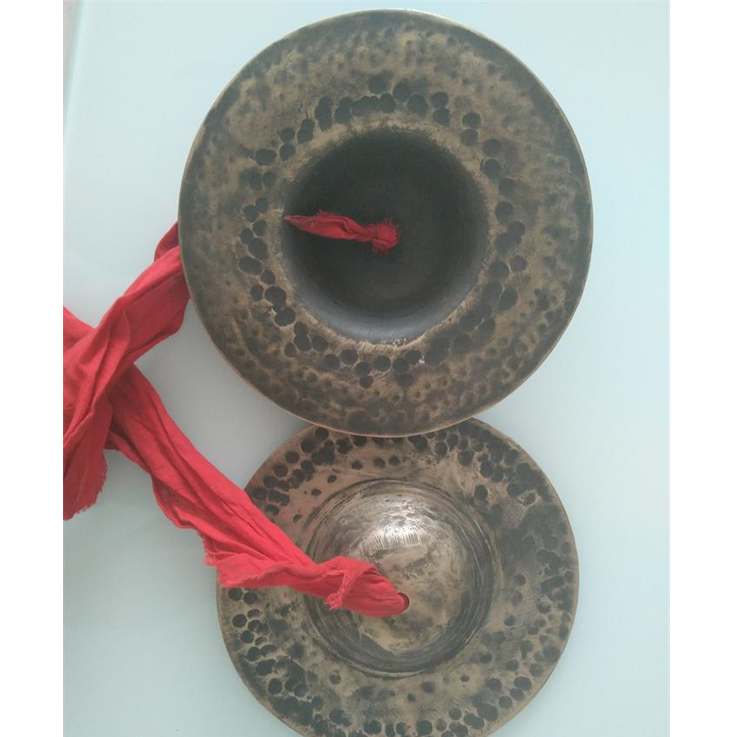toubo overview
 The head cymbal (pinyin: Tóu bó) is a Tujia sing-along instrument that is popular in Longshan, Sangzhi, Yongshun, Baojing, and Hubei Tujia and Miao Autonomous Prefectures in western Hunan Province and Hubei Province.
The head cymbal (pinyin: Tóu bó) is a Tujia sing-along instrument that is popular in Longshan, Sangzhi, Yongshun, Baojing, and Hubei Tujia and Miao Autonomous Prefectures in western Hunan Province and Hubei Province.Made of brass, bowl-shaped, the cymbal surface is wider and thicker, the diameter of the surface is 20cm-25cm, the diameter of the bowl is 10cm-12.5cm, the height of the bowl is 3cm-4cm, the top of the bowl is drilled with silk cloth, and the two sides are a pair.
When playing, hold one side with both hands and strike each other to pronounce. The sound is crisp and bright. There are many ways to play, such as boring, bright and side-playing. When hitting the cymbal, the two palms are close to the body of the cymbal, and the edge of the rear end of the two cymbals is not separated, which is convenient for playing fast passages in the music card; when hitting the light, the cymbal is loose, the palm is relaxed, and the two cymbals are separated after hitting. The sound is naturally continued, the timbre is loud, and it is often in strong contrast with the dull hit; the side hit is a blow. For the Tujia percussion ensemble Daliuzi. The head cymbal is a high-pitched instrument in an instrumental ensemble, mostly played on a strong beat. It is often staggered in rhythm with two cymbals, with endless changes.
- Pinyin:Tóu bó
- popular area:Longshan, Sangzhi, Yongshun, Baojing
- type:Tujia Mutual Singing Musical Instruments
- shape:Made of brass, bowl-shaped, the cymbal surface is wider and thicker
overview of other similar instruments
- sanyanxiao overview
- Daguangxian overview
- Leiqin overview
- hahao overview
- yandundagu overview
- Han Xiaozheng overview
- Fang Xiang overview
- guanzi overview
- zhuqin (Dao Qin) overview
- zhuiqin overview
- bangzi overview
- three-stringed piano overview
- Gehu overview
- xiao overview
- xiaokonghou overview
- Konghou overview
- Sheng overview
- suona overview
- hulusi overview
- gushao overview
 渝公网安备 50010702504639号
渝公网安备 50010702504639号